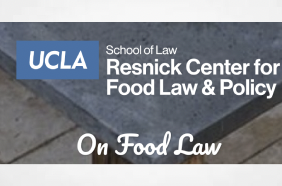by Alice Carli*
Humans have been altering plants for upwards of 10,000 years through a wide variety of techniques for genetic modification. In the 20th century, scientists developed transgenic genetic engineering, which combines DNA from two or more sources to achieve a desired trait. This discovery fundamentally altered our ability to manipulate crops and opened a Pandora’s box of commercial possibilities and political conflicts. More recently, the advent of CRISPR and other precision gene editing technologies has resurfaced tensions around the role of genetically modified (“GM”) crops in our agricultural and food systems.
Despite these longstanding tensions, the U.S. has the world’s largest production of GM crops by acreage, and it is estimated that over 75% of processed foods on our supermarket shelves contain genetically engineered ingredients.
At the same time, the country faces systemic sustainability challenges exacerbated by climate change and intensive monoculture farming. These include flooding, soil degradation, air and water pollution, and biodiversity collapse. Significant and holistic changes to U.S. agriculture are needed to tackle these problems.
If regulated effectively, GM crops have the potential to make U.S. agriculture more sustainable and climate resilient. When designed with climate-smart features, these crops can significantly enhance nutrient or photosynthesis efficiency, provide flood, drought, and disease resistance, and even improve soil carbon sequestration.
However, the current regulatory framework governing GM crops is not aligned with these goals. It is outdated, fragmented, and does not adequately protect farmers or the environment. To address these issues, a comprehensive legislative intervention and a new set of core principles are urgently needed to regulate GM crops in a manner that aligns with the evolving understanding of sustainable agriculture.
The Coordinated Framework for Regulation of Biotechnology was established under the Reagan administration to appease growing public concern about biotechnology while allowing the genetic engineering industry to innovate with minimal hindrance. The Framework delegated regulation to three existing agencies: the United States Department of Agriculture (“USDA”), the Environmental Protection Agency (“EPA”), and the Food and Drug Administration (“FDA”). However, it did not give these agencies any new statutory authority, and it largely pre-empted states from participating in GM crop regulation.
The USDA primarily governs GM crops through the Animal and Plant Health Inspection Service (“APHIS”). APHIS regulates crops that are plant pests or which can create risk in a plant product. APHIS has exempted various GM plants from regulation where they could have otherwise been developed through conventional breeding. It also exempts plants that it considers less risky due to a specific combination of species types, GM traits, and modification mechanisms.
The EPA has the authority to regulate GM crops engineered to produce a pesticide. It employs post-approval monitoring and management programs and requires permits for field testing crops with an experimental pesticide gene. In 2023, the EPA announced changes to its regulations to exempt crops with modifications that reduce or eliminate the activity of a gene or in which a modification matches a gene found in a sexually compatible plant.
Meanwhile, transgenic proteins are subject to FDA oversight because they are considered food additives. However, the FDA considers most GM crops exempt from pre-market approval because they are “substantially equivalent” to non-GM crops.
As a result of its piecemeal design, the Framework fails to address the environmental sustainability and economic equity issues raised by climate change and consolidation in the GM seed market.
New genetic engineering methods blur the lines of existing regulatory authority, while others lie outside the jurisdiction of any agency. Proponents of new GM crops are forced to navigate a “bureaucratic maze” and an “alphabet soup” of initiatives. Also, the system is not designed to distinguish between genetic engineering that aligns with the public interest and that which threatens harmful ecological impacts or is geared only towards increasing short-term yields.
More: https://onfoodlaw.org/2024/05/14/the-urgent-need-to-update-the-regulation-of-gm-crops/#more-139050




